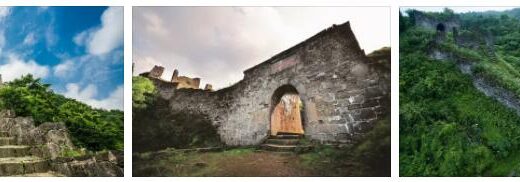Site of the “Peking Man” (World Heritage)
Zhoukoudian, about 40 km from Beijing, is one of the most important paleontological sites in the world. From 1927 onwards, bone fragments of the so-called Peking man were discovered in a cave. In total, researchers found remains of more than 40 men and women as well as stone artifacts. The age of the finds has been determined to be up to 770,000 years.
Site of the “Peking Man”: Facts
| Official title: | The ‘Peking Man’ was found in Zhoukoudian |
| Cultural monument: | Site of the remains of Sinanthropus pekinensis or Homo erectus p., The “Peking Man” |
| Continent: | Asia |
| Country: | China |
| Location: | Zhoukoudian, southwest of Peking (Beijing) |
| Appointment: | 1987 |
| Meaning: | an important building block in the process of evolution |
Site of the “Peking Man”: history
| 430,000-220,000 years ago | Sinanthropus pekinensis |
| 1918 | Excursion by the Swedish geologist Johan Gunnar Andersson to the “Chicken Bone Mound” of Zhoukoudian |
| 1921 | Investigation of the “dragon bone hill” by Andersson and the Austrian antiquarian Otto Zdansky |
| 1927 | first public presentation of Zhoukoudian’s fossil finds |
| 1928 | with the financial support of the Rockefeller Foundation, further investigations with successful findings |
| 1929 | Discovery of a complete skull of a human-like being |
| 1933-34 | Finding the remains of cavemen who lived 12,000 to 27,000 years ago |
| 1941 | finds are lost during transport to the USA |
The cave entrance to the past
After Swedish and Austrian geologists and archaeologists examined the slopes of the “Chicken Bone Hill” southwest of Beijing and uncovered fossil bones and teeth, a sensational find was made in 1929 when the skull of a hominid between 220,000 and 430,000 years old was recovered. The scientists involved in the excavations quickly realized that the finds must have come from human-like beings and were much older than initially assumed. Until then, bones of living beings had been found on the island of Java, which is part of what is now Indonesia, that were to settle between the monkeys and today’s humans.
The excavations were subsequently expanded to include the neighboring “dragon bone hill”. But first of all, the geologists and archaeologists found fossil animal bones and worked quartz stones that turned out to be tools used by cave dwellers. Above all, the teeth found gave reason to hope that one was actually on the trail to the ancestors of Homo sapiens. After part of a lower jaw with three teeth, a forehead bone, a humerus and a total of twelve individual teeth had been discovered, there was hardly any doubt that it was an unknown early human being.
The skull of a hominid named Sinanthropus pekinensis was the keystone of a puzzle to track down our ancestors. The researchers estimated that the “Peking Man” lived around 430,000 years ago. (In 2009, an age of approx. 770,000 was even calculated for some finds using the aluminum-beryllium method). The picture of our great ancestors was completed when it could be concluded from six more or less complete brain shells and further skull fragments, three upper arms, seven thighs and one shin, as well as 15 parts of the lower jaw and more than 150 teeth of about 40 “Peking people” of both sexes that the Early Chinese were between 144 and 156 centimeters tall and can be assigned to Homo erectus. According to programingplease, this creature between ape and human had stood up on its hind legs, and the front extremities were no longer used for locomotion as in the monkey, but had been transformed for other functions. But it would take more than 300,000 years for our “species”, Homo sapiens, to develop.
After a thorough examination of the carefully recovered fossil finds, it was decided at the beginning of the Second World War to have these “treasures of the history of man” transported to the United States for security reasons. The boxes with the valuable scientific finds were lost on this transport – this remains an unresolved mystery to this day – and have not reappeared since then.
In the years 1951, 1955 and 1966 only part of a tibia, a lower jaw and some skull fragments were found during further excavations. The scientists who examined the caves in the two mountains until 1966 came to the conclusion that the » Peking Man “used tools and could start fires. From gnawing marks on bones, they concluded that he ate animals, but also his fellows. However, this is now highly doubted, as American scientists, for example, were able to identify the alleged ash remains as mineralized animal feces. The majority of researchers now assume that the damage to the bones indicates death rites. Gnawing marks are also said to come from animals that dragged their animal and human victims into the caves for consumption.
It seems that the “Peking Man” is very reluctant, if at all, to reveal the secrets of his perhaps unspectacular everyday life.



